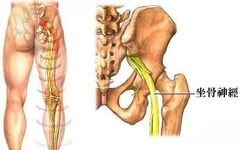

Electroacupuncture therapy refers to a treatment method that uses a low-frequency pulsed electric current applied to acupuncture needles inserted into specific acupuncture points on the body. This method is suitable for the same conditions treated by traditional acupuncture, and the equipment includes acupuncture needles and an electroacupuncture machine, typically using 26 to 28 gauge needles.Sometimes, to focus the electric current at the needle tip, a layer of high-strength insulating paint is applied to the needle body, which is then scraped off at the tip before use.
Indications
Any condition that can be effectively treated with acupuncture can also be treated with electroacupuncture.It is particularly effective for conditions such as epilepsy, neuroses, neuralgia, paralysis, sequelae of cerebrovascular accidents, post-polio syndrome, gastrointestinal diseases, angina pectoris, and hypertension.In surgical anesthesia, electroacupuncture has unique advantages.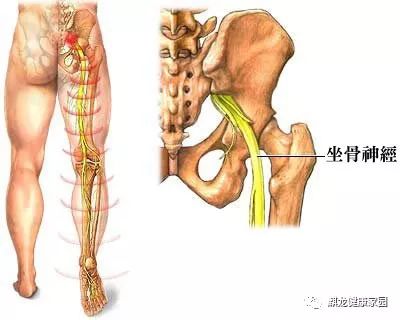 Procedure (Do not attempt without professional guidance)Before using the electroacupuncture machine, the intensity adjustment knob must be set to zero (no output), and then each pair of output electrodes from the machine should be connected to two acupuncture needles.Generally, the same pair of output electrodes should be connected on the same side of the body; when using electroacupuncture on points in the chest or back, do not connect the electrodes across the body, and avoid allowing the current to pass through the heart area.When activating the current, adjust the knob to gradually increase the intensity from zero to a comfortable level for the patient.Avoid decreasing the intensity abruptly or having it fluctuate.The intensity varies from person to person, typically adjusted to the patient’s comfort level.In clinical treatment, the current is usually applied for about 15 minutes, transitioning from low frequency to medium frequency, allowing the patient to experience sensations such as soreness, distension, or warmth, or rhythmic contractions of local muscles.
Procedure (Do not attempt without professional guidance)Before using the electroacupuncture machine, the intensity adjustment knob must be set to zero (no output), and then each pair of output electrodes from the machine should be connected to two acupuncture needles.Generally, the same pair of output electrodes should be connected on the same side of the body; when using electroacupuncture on points in the chest or back, do not connect the electrodes across the body, and avoid allowing the current to pass through the heart area.When activating the current, adjust the knob to gradually increase the intensity from zero to a comfortable level for the patient.Avoid decreasing the intensity abruptly or having it fluctuate.The intensity varies from person to person, typically adjusted to the patient’s comfort level.In clinical treatment, the current is usually applied for about 15 minutes, transitioning from low frequency to medium frequency, allowing the patient to experience sensations such as soreness, distension, or warmth, or rhythmic contractions of local muscles.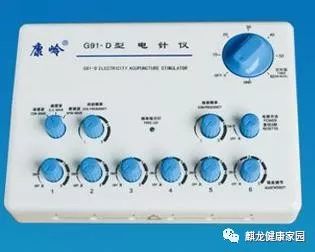 When using electroacupuncture on a single point, select points where major nerve trunks pass through (such as Huan Tiao (环跳) on the lower limb), insert the needle, and connect one electrode to the needle while the other is connected to a damp gauze as a reference electrode, secured to the skin along the same meridian.If performing electroacupuncture on two adjacent points, ensure that the needles are separated by dry cotton balls to prevent short-circuiting, which could affect efficacy and damage the machine.
When using electroacupuncture on a single point, select points where major nerve trunks pass through (such as Huan Tiao (环跳) on the lower limb), insert the needle, and connect one electrode to the needle while the other is connected to a damp gauze as a reference electrode, secured to the skin along the same meridian.If performing electroacupuncture on two adjacent points, ensure that the needles are separated by dry cotton balls to prevent short-circuiting, which could affect efficacy and damage the machine.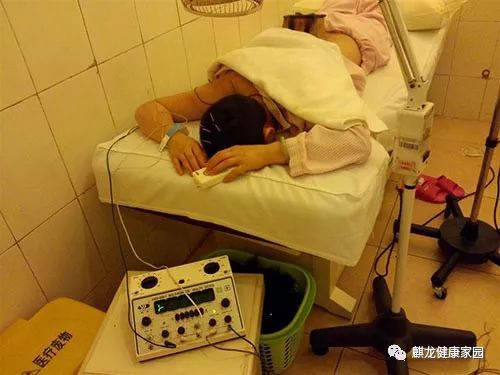 After treatment, first reduce the current to zero, turn off the power, then remove the electrode clips from the needle handles and withdraw the needles from the tissue. After treatment, also check the number of needles used and inspect the puncture sites to avoid leaving needles behind or causing secondary bleeding.Generally, 5 to 7 sessions constitute one treatment course, with treatments occurring daily or every other day;for chronic conditions, the course may be longer, with 10 days or 10 sessions as one course;for acute or newly developed conditions, the course may be shortened, with treatments up to twice daily until cured.Rest for 3 to 5 days between treatment courses.Point Selection Based on DiagnosisPoints can be selected according to traditional acupuncture theory, following meridians for diagnosis and treatment;or using A Shi (阿是) points as stimulation points;and also considering the distribution of nerves to select points where major nerve trunks and muscle motor points are located.For example:1. For the head and face, use Ting Hui (听会), Yi Feng (翳风) (facial nerve), Xia Guan (下关), Yang Bai (阳白), Si Bai (四白), Xia Cheng Jiang (侠承浆) (trigeminal nerve).
After treatment, first reduce the current to zero, turn off the power, then remove the electrode clips from the needle handles and withdraw the needles from the tissue. After treatment, also check the number of needles used and inspect the puncture sites to avoid leaving needles behind or causing secondary bleeding.Generally, 5 to 7 sessions constitute one treatment course, with treatments occurring daily or every other day;for chronic conditions, the course may be longer, with 10 days or 10 sessions as one course;for acute or newly developed conditions, the course may be shortened, with treatments up to twice daily until cured.Rest for 3 to 5 days between treatment courses.Point Selection Based on DiagnosisPoints can be selected according to traditional acupuncture theory, following meridians for diagnosis and treatment;or using A Shi (阿是) points as stimulation points;and also considering the distribution of nerves to select points where major nerve trunks and muscle motor points are located.For example:1. For the head and face, use Ting Hui (听会), Yi Feng (翳风) (facial nerve), Xia Guan (下关), Yang Bai (阳白), Si Bai (四白), Xia Cheng Jiang (侠承浆) (trigeminal nerve). 2. For the upper limb, use Jing Jiao (颈夹脊) 6-7, Tian Ding (天鼎) (brachial plexus), Qing Ling (青灵), Xiao Hai (小海) (ulnar nerve), Shou Wu Li (手五里), Qu Chi (曲池) (radial nerve), Qu Ze (曲泽), Xie Men (郄门) (median nerve).3. For the lower limb, use Huan Tiao (环跳), Yin Men (殷门) (sciatic nerve), Wei Zhong (委中) (tibial nerve), Yang Ling Quan (阳陵泉) (common peroneal nerve), Chong Men (冲门) (femoral nerve).4. For the lumbar and sacral region, use Qi Hai Yu (气海俞) (lumbar nerve), Ba Liao (八﨓) (sacral nerve).
2. For the upper limb, use Jing Jiao (颈夹脊) 6-7, Tian Ding (天鼎) (brachial plexus), Qing Ling (青灵), Xiao Hai (小海) (ulnar nerve), Shou Wu Li (手五里), Qu Chi (曲池) (radial nerve), Qu Ze (曲泽), Xie Men (郄门) (median nerve).3. For the lower limb, use Huan Tiao (环跳), Yin Men (殷门) (sciatic nerve), Wei Zhong (委中) (tibial nerve), Yang Ling Quan (阳陵泉) (common peroneal nerve), Chong Men (冲门) (femoral nerve).4. For the lumbar and sacral region, use Qi Hai Yu (气海俞) (lumbar nerve), Ba Liao (八﨓) (sacral nerve). When selecting points, pay attention to the requirements of the current circuit, ensuring that adjacent points are paired appropriately.For example, for stomach pain, when selecting Zu Yang Ming Wei Jing (足阳明胃经) Zu San Li (足三里), also select Gong Sun (公孙) on the same side from the Zu Tai Yin Pi Jing (足太阴脾经) to form a pair.
When selecting points, pay attention to the requirements of the current circuit, ensuring that adjacent points are paired appropriately.For example, for stomach pain, when selecting Zu Yang Ming Wei Jing (足阳明胃经) Zu San Li (足三里), also select Gong Sun (公孙) on the same side from the Zu Tai Yin Pi Jing (足太阴脾经) to form a pair.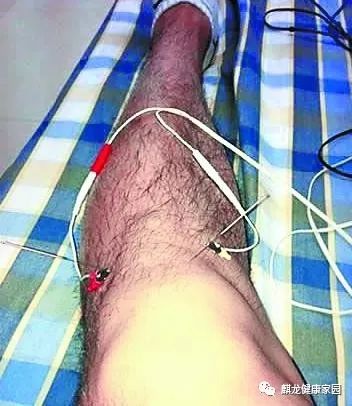 Precautions1. Before each treatment, check that the electroacupuncture machine is functioning properly.After treatment, ensure that all output adjustment knobs are returned to zero, then turn off the power and disconnect the wires.2. Electroacupuncture can induce strong muscle contractions; inform the patient beforehand to prepare them mentally and ensure cooperation during treatment.3. For patients with severe heart disease, take special care to avoid the current circuit passing through the heart;avoid using electroacupuncture on points near the medulla oblongata or the precordial area to prevent triggering seizures or causing cardiac and respiratory arrest.4. Needles that have been used for warming acupuncture may oxidize on the surface, leading to poor conductivity;some needles are made of aluminum wire and treated to a golden color, which also has poor conductivity.It is best to avoid using such needles; if used, ensure the output electrode is clipped to the needle body.5. If the output current is intermittent during treatment, it may indicate a malfunction of the electroacupuncture machine or a broken wire; repair before use.6. After multiple uses, needles may become damaged; check for broken needles before sterilization to prevent needle breakage.
Precautions1. Before each treatment, check that the electroacupuncture machine is functioning properly.After treatment, ensure that all output adjustment knobs are returned to zero, then turn off the power and disconnect the wires.2. Electroacupuncture can induce strong muscle contractions; inform the patient beforehand to prepare them mentally and ensure cooperation during treatment.3. For patients with severe heart disease, take special care to avoid the current circuit passing through the heart;avoid using electroacupuncture on points near the medulla oblongata or the precordial area to prevent triggering seizures or causing cardiac and respiratory arrest.4. Needles that have been used for warming acupuncture may oxidize on the surface, leading to poor conductivity;some needles are made of aluminum wire and treated to a golden color, which also has poor conductivity.It is best to avoid using such needles; if used, ensure the output electrode is clipped to the needle body.5. If the output current is intermittent during treatment, it may indicate a malfunction of the electroacupuncture machine or a broken wire; repair before use.6. After multiple uses, needles may become damaged; check for broken needles before sterilization to prevent needle breakage.
(All images and text are sourced from the internet)
(Note: The content regarding treatment principles and methods is provided for readers to understand TCM theoretical knowledge; treatment methods are complex and variable, and self-diagnosis and treatment are not recommended. For similar symptoms, please seek professional medical assistance.)
Recommended Reading: Jin Long Dai can connect and cup, grand launch.

